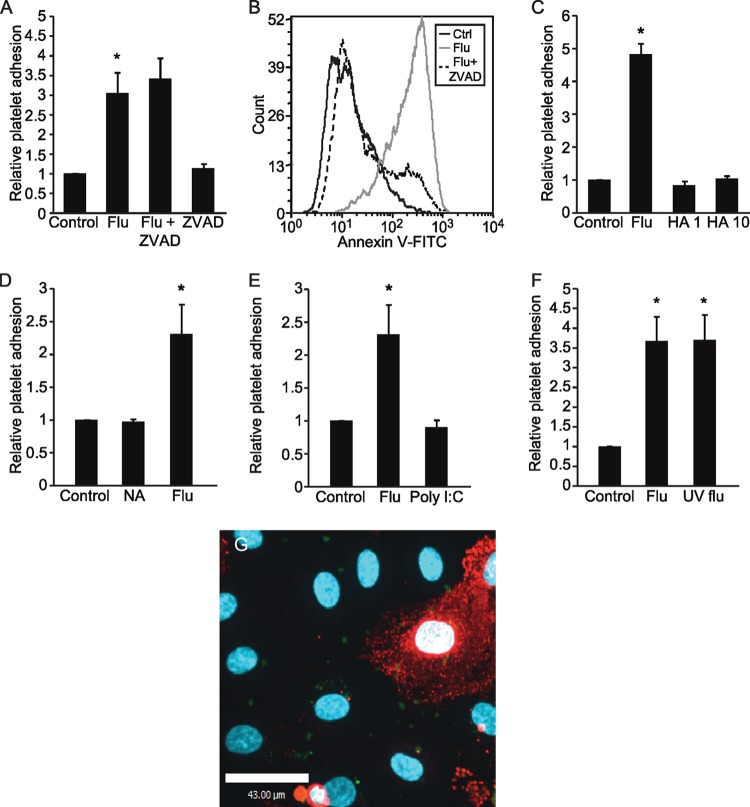FIG 2.
Exploring the components of the virus responsible for influenza virus-induced endothelium-platelet adhesion. Inhibition of caspases using ZVAD does not affect influenza-induced platelet-endothelial interactions (n = 3; *, P < 0.05 versus the control [Ctrl]) (A), although ZVAD treatment successfully blocks influenza-induced endothelial cell apoptosis (B). The histogram is representative of 3 experiments. (C) Viral binding is not sufficient to induce platelet-endothelial interaction, as the effect was not recapitulated by treatment with the protein hemagglutinin (HA; at 1 or 10 μg/ml). n = 3; *, P < 0.05 versus control and HA groups. (D) Recombinant viral membrane enzyme neuraminidase (NA) cannot recapitulate influenza-induced platelet-endothelial interaction. n = 3; *, P < 0.05 versus control and NA groups. (E) Viral RNA mimetic [poly(I·C)] did not recapitulate influenza-induced platelet-endothelial interaction. n = 3; *, P < 0.05 versus control. (F) Viral replication is not required for influenza-induced platelet-endothelial interaction. Replication-deficient (UV flu) and live virus induced similar degrees of platelet-endothelial adhesion. n = 3; *, P < 0.05 versus control. (G) Influenza-induced platelet-endothelial interaction visualized by confocal microscopy reveals that influenza induces platelet adhesion to endothelial cells in a paracrine fashion. Calcein-AM-labeled platelets are shown in green, while an influenza-infected endothelial cell is labeled using an antibody to viral nucleoprotein and appears red. The image is representative of 2 experiments.

